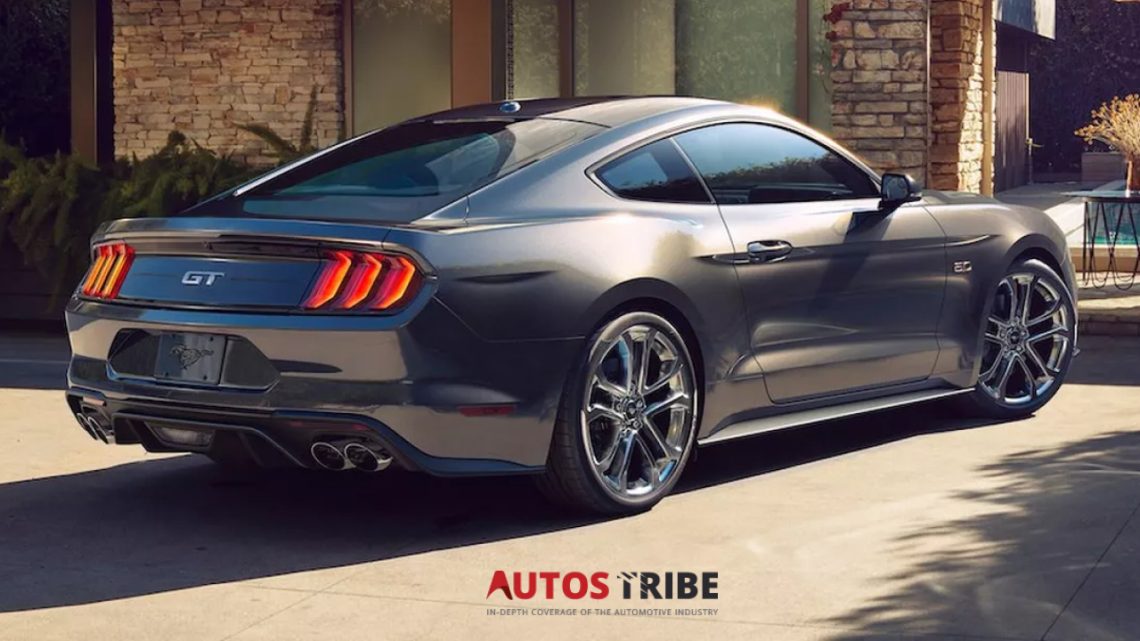Imagine you’re at a car show, admiring a row of shining 4 Cylinder Mustang everywhere, right? Not exactly. Hidden among them is a tough little four cylinder ‘Stang that could compete with the big guys.
I understand. When we think of ‘Mustang,’ four-cylinders don’t usually come to mind. But these underdogs have been part of the Pony car legacy almost from the start, and they’ve got their own stories.
From the fuel-efficient Mustang II that saved Ford during the oil crisis, to today’s EcoBoost that accelerates like a turbo, 4-cylinder Mustangs are the family’s rebels. They took a different path, and they’re still around.
Table of Contents
So grab a beer (or a coffee, no judgment here), and let’s explore the wild world of the 4 cylinder Mustang. By the end, you might just find yourself defending these little engines at your next car meet. Let’s explore the story of 4 cylinder mustang – The Pony Car:
1. 1974-1978 Mustang II
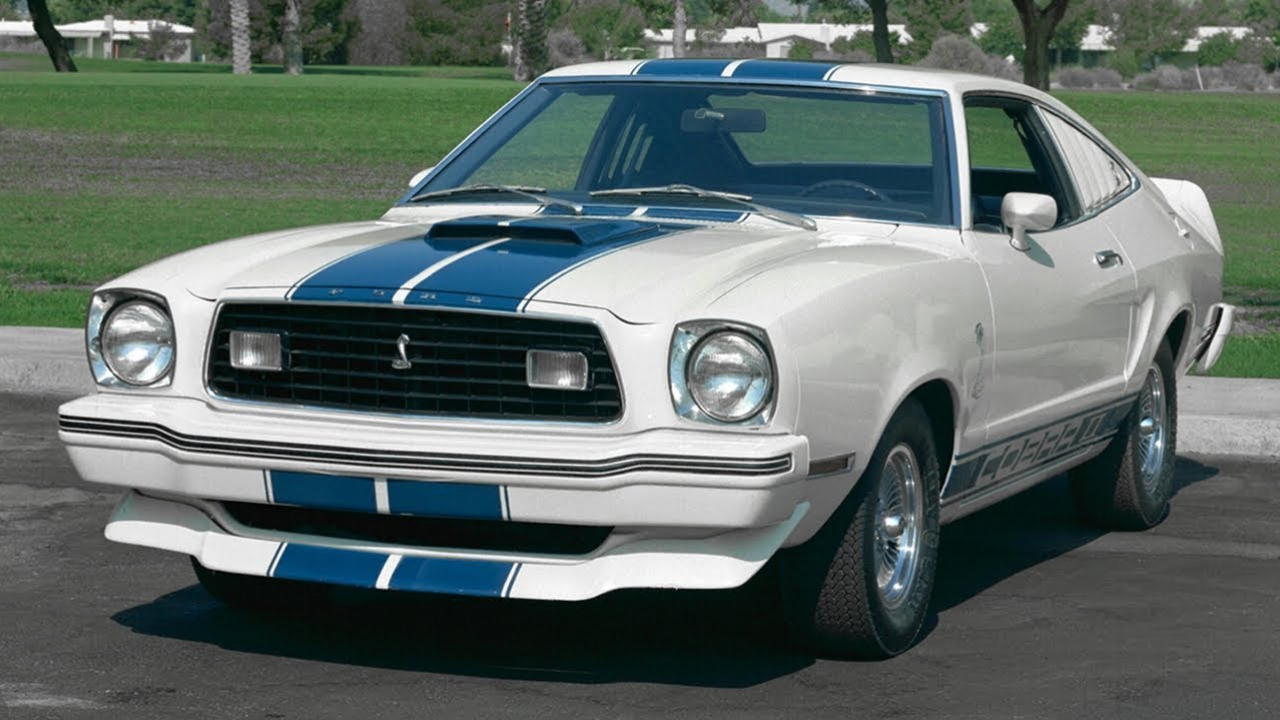
The Ford Mustang II stayed as a ‘pony’ vehicle, an inexpensive model with a typical athletic appearance, though it was noticeably shorter than the iconic original. Nowadays, it’s often regarded as cramped, slow, and underpowered, but back then it was a very practical answer to the conditions in the United States. Despite its lack of power and style, the Mustang II would outmaneuver the original on winding roads.
The Mustang II was scaled down since many thought its forerunner had become too big for an athletic coupe. Designing the Mustang II on the new platform that supported the small Ford Pinto sub-compact made perfect sense. When the Arab oil embargo struck in 1973, the product planners seemed brilliant. The public agreed as Ford sold over 1.1 million Mustang IIs from 1974 to 1978. Ford stated it was ‘the right car, at the right time,’ and it won Car of the Year from Motor Trend in 1974.
Powertrains
Today, however, the Mustang II is often viewed as too small and slow. The performance complaints are understandable, as the car initially had only two engine choices – a 2.3-liter in-line four-cylinder with 88 horsepower, and a 2.8-liter V6 with 105 horsepower. Both engines are lackluster by today’s family car standards and a major disappointment compared to the powerful V8 engines of the earlier models.
However, the smaller size and modern production methods helped reduce the car’s weight by at least 500 pounds compared to its predecessor. In 1975, after the oil crisis ended, Ford introduced the popular 302 cubic inch V8 option.
It generated 140hp, which was still modest by any measure, but it at least sounded right and showed potential. When R&T magazine evaluated the V8-driven vehicle (with a 3-speed auto), they still merely touched a max speed of 105 miles per hour and a 0-60 time of 10.5 seconds.
Exterior
With an exterior design polished through a collaboration with the Italian Ghia design studio, now owned by Ford, the cars certainly looked stylish. They came in two body styles: a ‘notchback’ coupe and a fastback model featuring a practical hatchback.
Moreover, there was a ‘T-top’ fastback variant with two detachable glass roof panels. Throughout the car’s production, Ford released special edition ‘appearance packs’ with unique exterior trim and decals. These included the Mustang Stallion and Cobra II editions in 1976 and the King Cobra model in 1978.
However, due to rising gas prices and strict smog regulations, Ford didn’t boost the power of these models. The Mustang II was introduced to compete with compact, sporty, foreign imports like the Toyota Celica and Datsun 240Z, fitting that role perfectly.
Nowadays, top Mustangs are roaring V8 beasts, but back in 1973, the Mustang was a daily sporty car meant for a more economical, less ambitious crowd, similar to today’s entry-level EcoBoost Mustang.
| Parameters | Details |
| Engines with Horsepower Ratings | – 2.3L I4: 88 hp – 2.8L V6: 105 hp – 302 cubic inch V8 (1975): 140 hp |
| Important Features | – Smaller, lightweight design (500 lbs lighter than predecessor) |
| – Exterior designed with Italian Ghia studio | |
| – Notchback and fastback body styles | |
| – Special editions: Stallion, Cobra II, King Cobra |
2. 1979-1993 Mustang (Fox Body)
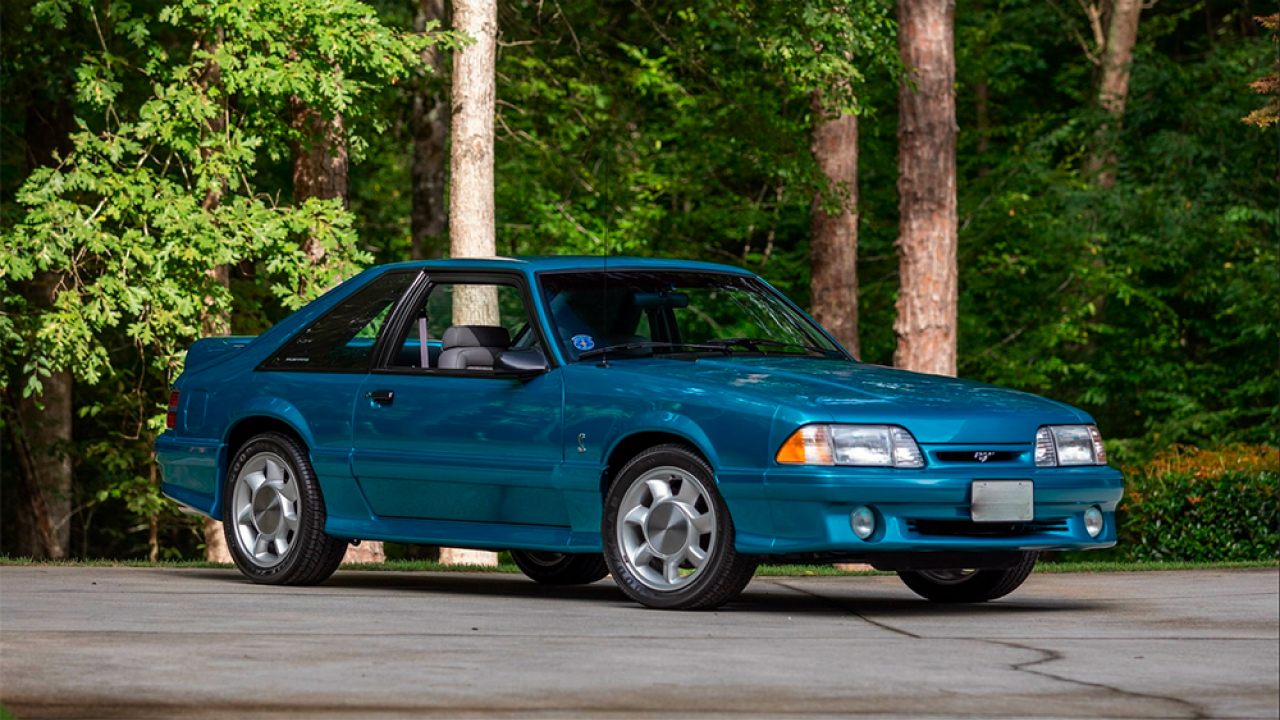
In ’79, the top priority for coupe buyers was the design. Ford ditched the old plans for big, rounded fenders and went with a wedge shape. At the same time, they marketed the Mustang as a sporty, everyday coupe. Although it succeeded as a daily driver and coupe, it fell short in the sports department.
Exterior
Ford created the Fox platform, which gave the third generation Mustang its Fox-body nickname. It had four square headlights and a slanted grille in front of the radiator. The car came as a 2-door coupe or a 3-door hatchback. The coupe ended in a short decklid, while the hatchback had a sloped tailgate. The small window behind the doors and the thick C-pillar were distinctive features.
Interior
The interior let down customers with its family-car style. The wood trim on the dashboard seemed better suited for a sedan than a 4 cyl sports car. Thankfully, Ford added a complete set of dials and gauges: amp meter, oil pressure, coolant temperature, tachometer, and speedometer. At least the Mustang provided ample space for the driver and front passenger. The back didn’t have much room, but that wasn’t a priority for a coupe.
Ford fitted the base model with a four-cylinder engine producing 89 horsepower, a V6 as a mid-tier option, and a V8 for the top variant. Shortly after its debut, supply issues with the V6 led the carmaker to switch it out for an inline-six.
3. 1981 4 Cylinder Mustang Turbo
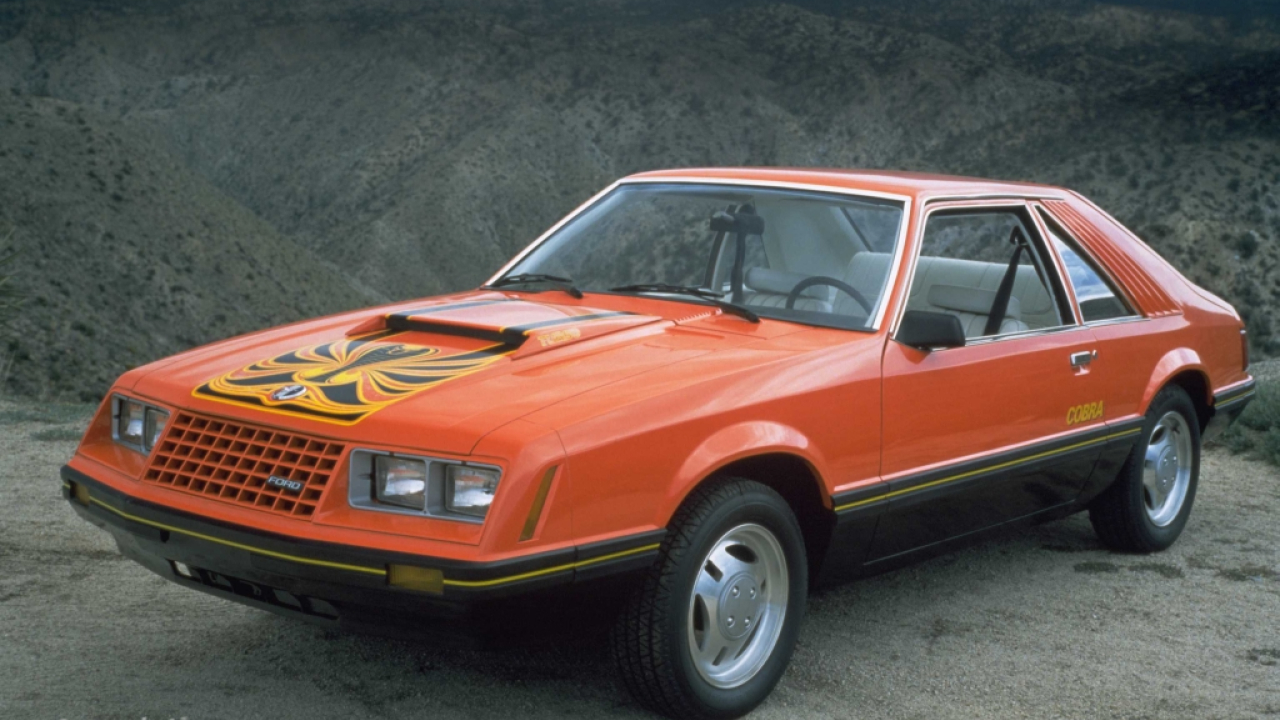
The third generation of the Mustang spanned a broad range but was divided into several updates over time. In 1981, Ford launched a turbo variant.
Following a series of oil crises, customers only worried during crises, whereas large companies were constantly concerned. Ford aimed to combine both performance and fuel efficiency in one package.
The Fox-body Mustang was a mix of admiration and criticism for the American carmaker. The previous splendor now struggled to keep up with standard cars. However, it appeared capable of a ten-second quarter-mile run. Its four square headlights flanked the slanted grille, and the sharp design of the greenhouse made a strong impression at launch. While the front remained appealing, the rear lost its charm, sporting dull taillights.
Inside, it resembled many other compact vehicles, featuring a squared instrument cluster and in-dash, recessed dials. The interior design drew from European influences but only partially embraced them.
The Mustang’s major update was the addition of a turbocharger to the base 2.3-liter engine, generating 120 hp. This was a significant upgrade for 4 cylinder Mustang as it provided a peak output of 131 hp. Meanwhile, the 5.0-liter V8 only produced 140 hp.
| Parameters | Details |
| Engines with Horsepower Ratings | – 2.3L I4: 89 hp (base model) – Turbocharged 2.3L I4: 131 hp (1981) – 5.0L V8: 140 hp |
| Important Features | – Fox platform with the distinctive wedge shape |
| – Square headlights and slanted grille | |
| – V6 and V8 options | |
| – Mix of European-influenced interior design elements |
4. 2015-2023 Sixth Gen Mustang EcoBoost
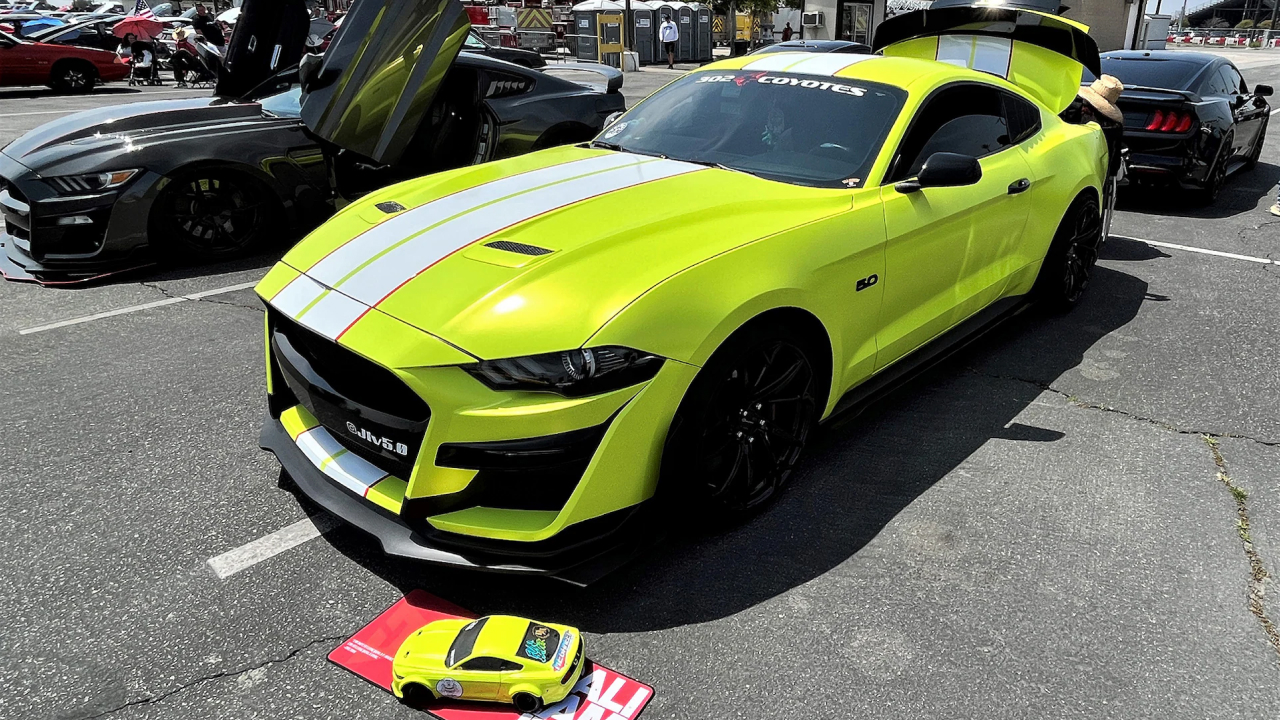
The debut of the 6th-generation Mustang thrilled many buyers seeking a fresh change after nearly ten years of 5th-gen Mustang production. Ford met these demands head-on with the 2015 release of the 6th-generation Mustang. Finally, the much-anticipated Mustang had arrived.
In the later stages of fifth-generation Mustang production, there was intense speculation about Ford’s timeline for introducing a completely new Mustang. Additionally, there were widespread inquiries into Ford’s approach to the design direction of the latest Mustang. Several of the company’s concept cars during that period showcased more futuristic design elements, which received mixed reactions from traditional Mustang enthusiasts.
Fortunately, those concerns turned out to be unfounded when the 6th-generation Mustang was revealed. Although it featured a modern cabin, Ford’s designers drew heavily from 1960s-era styling when creating this iteration of the Mustang.
Combining Modern & Vintage Aesthetics
The sixth-generation Mustang clearly reflects vintage inspirations in its design. It maintains a more aggressive stance compared to earlier models while faithfully incorporating classic styling elements, showcasing Ford’s homage to the original Mustangs. The S550 Mustang prominently featured a redesigned front fascia known as the “shark-bite” look, reminiscent of the iconic design seen on the ’69 Mustang.
Additional “traditional” design elements featured a steeply angled fastback roof and three-bar tail lights. Enhancing the sixth-generation Mustang’s bold appearance was a clear shift in posture. The S550 Mustang sat 1.5 inches lower at its roofline and was 2.8 inches broader compared to its forerunner. These alterations aimed to lower the S550’s center of gravity, thereby enhancing its handling dynamics.
During the sixth generation, a variety of new paint shades became available, some of which were remarkably eye-catching. Among these were:
- Orange Fury
- Need For Green
- Royal Crimson
- Rapid Red
- Triple Yellow
Improved Comfort & Functionality
The updated sixth-gen Mustang boasted a redesigned interior, offering a range of upscale features. It came equipped with SYNC technology as standard, and later versions could include SYNC with MyFord Touch. Subsequent models also added Apple CarPlay and Android Auto to enhance connectivity options.
Ford engineers also focused on enhancing interior space in the Mustang, with increased shoulder room, legroom, and trunk space. They also made improvements to rear-occupant leg space during the sixth-generation production.
During the S550 production, there was a nostalgic nod to earlier Mustangs with the introduction of a unique T-shaped steering wheel featuring the iconic galloping horse logo at its center, drawing inspiration from past Mustang designs while incorporating modern updates.
A Mechanical Marvel
The sixth iteration of the Mustang was notable for its impressive mechanical advancements, introducing several pioneering features to the series. Possibly the most noteworthy of which was Ford’s pick of an independent rear suspension for the Mustang, instead of a live back axle. Critics widely agreed that this overdue change markedly improved the Mustang’s steering performance.
The sixth iteration of the Mustang was the debut model to feature Ford’s 2.3L EcoBoost I4 engine, available as an option. Despite being a four-cylinder engine, it delivered an impressive 310 horsepower and 320 lb-ft of torque thanks to its direct injection technology.
Additional engine options for the S550 included the 3.7L V6 “Cyclone” (300 hp / 280 lb-ft) and the 5.0L V8 “Coyote” (435 hp / 400 lb-ft). Ford also introduced variants of its modular engine, such as the 5.2L V8 “Voodoo” and the 5.2L V8 “Predator”.
Further enhancements featured larger Brembo brakes, double ball joints, and MacPherson struts in the front end of the S550. These improvements complemented the sixth-generation Mustang’s lower center of gravity and new independent rear suspension.
| Parameters | Details |
| Engines with Horsepower Ratings | – 2.3L I4 EcoBoost: 310 hp – 3.7L V6 “Cyclone”: 300 hp – 5.0L V8 “Coyote”: 435 hp – 5.2L V8 “Voodoo” – 5.2L V8 “Predator” |
| Important Features | – Independent rear suspension |
| – Modern cabin with vintage styling cues | |
| – “Shark-bite” front fascia | |
| – SYNC technology, Apple CarPlay, Android Auto | |
| – Larger Brembo brakes | |
| – Double ball joints, MacPherson struts | |
| – Enhanced interior space: increased shoulder room, legroom, trunk space | |
| – Notable paint colors: Orange Fury, Need For Green, Royal Crimson, Rapid Red, Triple Yellow |
5. 2024 – Present Mustang Ecoboost
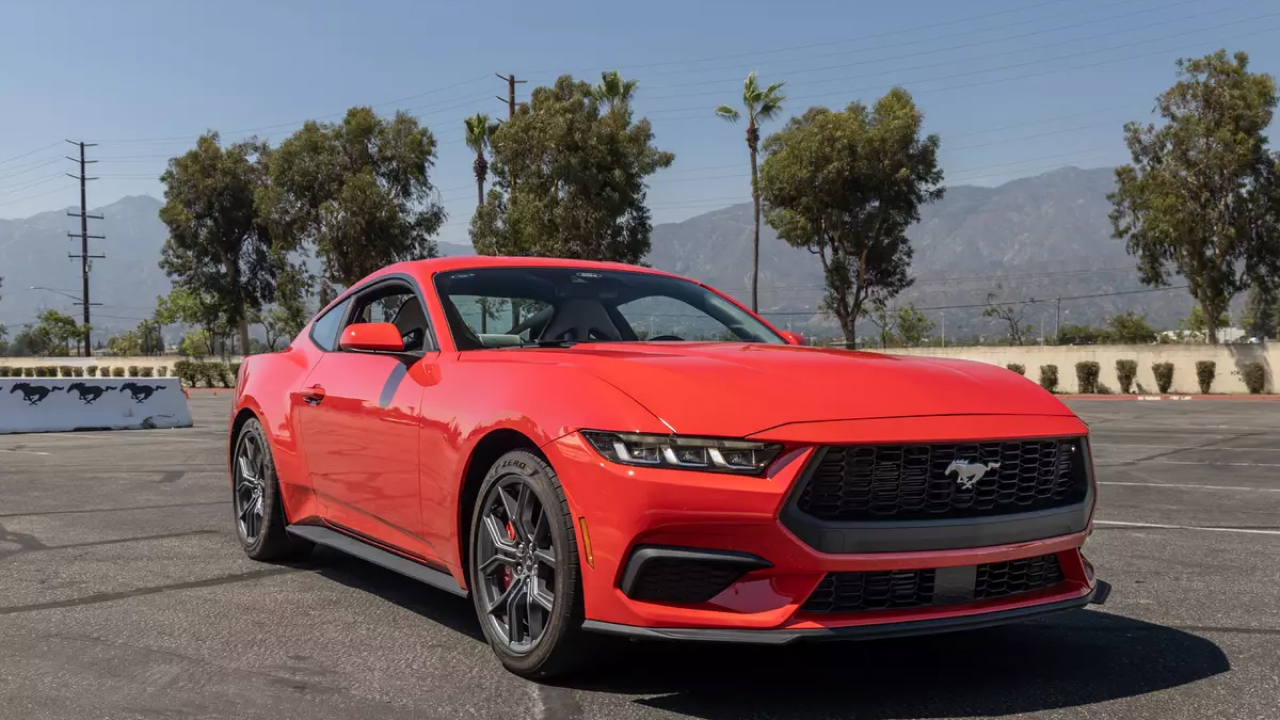
In 2022, Ford unveiled the seventh generation of the Mustang at the Detroit Auto Show. The 2024 4 Cylinder Mustang known as the S650, was a total overhaul, and despite Ford’s market dominance following the Camaro’s demise, they still packed it with performance for their fans.
In its second year, the seventh-generation 2025 Mustang maintains its original 1960s mission: to provide a distinctly American sporty coupe experience. Mustang comes under the electric vehicles and fuel efficient sports utility vehicle category of automobiles. Diversity is central to its appeal, offering options from a 315-horsepower turbo four-cylinder to a 480-hp 5.0-liter V-8, and even the more aggressive 500-hp Mustang Dark Horse.
You can opt for a six-speed manual transmission instead of the standard 10-speed automatic with the latter two, though the turbo four only comes with an automatic. The classic fastback coupe and soft-top convertible body styles are back for 2025, and the Mustang continues its tradition of special editions, honoring its American automotive legacy.
The latest is the 2024 60th Anniversary Edition, limited to 1965 units, referencing its introduction year—though it was actually available in April 1964 as a 1965 model.
Still, the 4 Cylinder Mustang’s carefree spirit endures, providing stylish, sporty transport for two—or three or four, if they don’t mind squeezing into the tiny rear seats. With the Chevy Camaro discontinued and the Dodge Challenger being redesigned with only inline-six or electric options, the Mustang is the last V–8–powered domestic pony car left.
Interior
The Mustang’s interior design blends new and retro elements. We found the seats to be very supportive, and the standard 12.4-inch instrument cluster is a huge improvement over the previous model. The configurable display can be tailored to meet the needs of most patriotic drivers, with selectable colors, gauges, and even a “calm” screen that shows only essential information.
For those feeling nostalgic, the cluster can mimic the 1987 Mustang’s analog gauges, and a second analog throwback screen inspired by the 1967 Mustang is available as an over-the-air update for all seventh-gen models. Ambient lighting and a driver’s display adjust to the selected drive mode. Base 4 Cylinder Mustang comes with cloth seats and optional micro-suede vinyl inserts, while the Premium level adds stitched details on the door trim and dashboard.
The Mustang GT features leather inserts. Ford has also introduced a Remote Rev function, allowing the engine to rev up with a simple click from the key fob, so you can enjoy the sound from outside the car.
| Parameters | Details |
| Engines with Horsepower Ratings | – 2.3L turbo I4: 315 hp – 5.0L V8: 480 hp – Mustang Dark Horse: 500 hp |
| Important Features | – All-new seventh generation design |
| – 10-speed automatic transmission | |
| – Classic fastback and convertible body styles | |
| – Special editions: 60th Anniversary Edition | |
| – Remote Rev function | |
| – Advanced configurable display | |
| – Ambient lighting and driver’s display adjusting to drive mode | |
| – Nostalgic cluster mimicking 1987 and 1967 Mustangs | |
| – Enhanced interior with options for cloth, micro-suede vinyl, and leather inserts |
